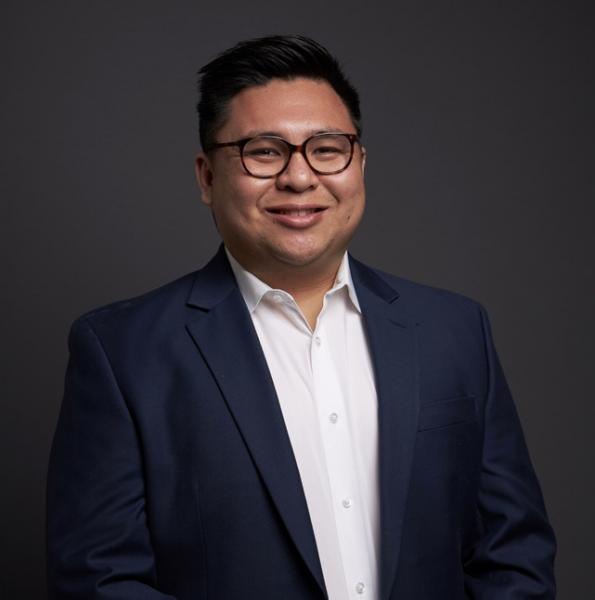American Psychological Association Division 50

What stage are you in your career? What is your affiliation?
I am in the last month of my Postdoctoral Research Associate position at the Center for Alcohol and Addiction Studies at Brown University School of Public Health. Next month, I will begin a tenure track Assistant Professor position at the Silver School of Social Work at New York University.
How would you describe your research interests?
My research examines the social, cultural, and structural determinants of health, specifically how racism and other forms of oppression influence Black, Indigenous, and People of Color (BIPOC) populations and its intersections with their gender, sexual orientation, and immigrant identities. Furthermore, my research also aims to intervene on the negative effects of racism and other forms of oppression through the implementation of randomized clinical trials (RCT) informed by strength-based approaches, critical theories and frameworks, and use of technology.
How did you become interested in addictive behaviors and health disparities research?
During my undergraduate training at the University of California, Davis, I became interested in health disparities through the intersection of Ethnic Studies and Public Health. I deemed that Ethnic Studies provided the contextual factors and critical analysis that can explain the health disparities data that Public Health provides. After graduating from UC Davis, I started a fellows program through the Health 4 All program, now a master’s program in Community Health and Prevention Research, at Stanford University School of Medicine, where I learned fundamental Public Health theories and interventions to address health disparities.
During my time at Stanford in 2014, the use of Electronic Nicotine Delivery System (ENDS) was increasingly becoming prominent especially among youth and young adults. While data was still emerging, there was no discussion on Asian Americans, Native Hawaiians, and Pacific Islanders (AANHPI) who use ENDS despite its observed popularity in this population in the San Francisco Bay Area. As a result, I worked on a mentored research project with Drs. Judith Prochaska and Cati Brown-Johnson to collect survey data on ENDS use in AANHPI young adults which we published subsequently in Preventive Medicine Reports (https://doi.org/10.1016/j.pmedr.2016.05.011). I continued this work qualitatively to understand the context of why Asian American young adults use ENDS in my master’s program in Asian American Studies at San Francisco State University.
Congrats on your recent work published in the American Journal of Health Behavior, titled “Social Influence of E-cigarette Use among Asian Americans in California.” What are the key takeaways from this work that are important for Division 50 members to know? What are the implications of this work for improving health equity and social justice?
This work is a continuation of the work that I started at Stanford where I wanted to qualitatively understand the contextual factors that encourage ENDS use among Asian American young adults.
Some of the primary takeaways from this study are:
1) Asian American young adults are influenced by their peers and in social spaces to not only use ENDS but also other substances. This is consistent with previous studies on Asian Americans and use of combustible cigarettes where they found that Asian Americans tend to use substances like combustible cigarettes to feel a sense of belonging because of being ostracized in predominantly White spaces like in college campuses.
2) Some vape shops are more than just a store to purchase products for Asian American young adults who use ENDS but it’s also a space to foster community with one another. Furthermore, vape shops have also collaborated with the rave scene and the car show industry to promote each other’s events and products which are frequented by Asian Americans in California.
3) Asian American young adults are motivated by the success stories of peers who are able to quit the use of combustible cigarettes through ENDS use.
Findings from this study suggests that researchers and practitioners who want to address ENDS use in this population might be more successful if they’re able to design health education regarding smoking cessation and/or harm reduction in group settings or collaborate with industries such as car shows or rave scenes which are prominent among Asian American young adults. More importantly, being able to address the importance of fostering a sense of belonging and racial diversity in spaces is imperative in preventing the use of substances as a form of coping from the stressors associated with feelings of isolation or ostracization.
How do you see your research interests evolving in the future?
During my postdoctoral training at Stanford University and Brown University, I expanded my work on examining the associations of racism and other forms of oppression with tobacco and nicotine use not only in BIPOC populations but among BIPOC LGBTQ+ who smoke. Furthermore, I have been exploring potential protective factors rooted in strength-based approaches such as cultural wealth and identity pride that may serve as a protective factor from experiences of racism and other forms of oppression that lead BIPOC LGBTQ+ to use tobacco and nicotine as a form of coping. I am in the process of writing grants to develop these strength-based interventions.
What would you like to share with someone just starting out in the field of addictive behaviors and health disparities research?
I encourage budding researchers to approach the work of addressing addictive behaviors and health disparities research from an interdisciplinary perspective. I think that being able to leverage the strength of different fields such as Ethnic Studies, Gender Studies, Queer Studies, Education, etc. in combination with the addictive behavior scholarship can assist in providing an in-depth understanding of the structural issues influencing addiction, especially in under-resourced and marginalized populations. More importantly, it is important to be rooted in community with those who have lived experiences and organizers who are doing the work on the ground. Being able to organize, learn, and work with them can help ensure that the work that we do is relevant, appropriate, and respectful of the communities most affected by substance use.
References
Maglalang, D. D., Brown-Johnson, C., & Prochaska, J. J. (2016). Associations with E-cigarette Use among Asian American and Pacific Islander Young Adults in California. Preventive Medicine Reports, 4, 29-32. https://doi.org/10.1016/j.pmedr.2016.05.011
Maglalang, D.D., Fong, L., Gapuz, V.J., Navarro, K., Yoo, G.J., & Le, M.N. (2023). Social Influence of E-Cigarette Use Among Asian Americans. American Journal of Health Behavior, 47(1), 173-181. https://doi.org/10.5993/AJHB.47.1.18

Resources are available for those struggling with addiction and numerous effective treatments exist. Whether you are looking for help for yourself or a loved one, we encourage you to seek out help.